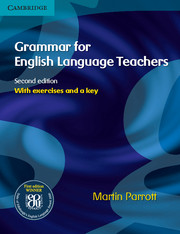24 - Ellipsis and substitution
Published online by Cambridge University Press: 09 February 2023
Summary
Key considerations
The biggest problem that ellipsis and substitution pose for learners is often one of comprehension. Because they may expect information to be more explicitly stated than it is, they may be confused when it is left out (ellipsis) or when a short grammatical word (e.g. one, do) is used in its place (substitution).
In their own speaking and writing learners may avoid ellipsis and substitution, using more repetition than is necessary. This usually doesn’t lead to misunderstanding, but it can make the increased effort involved in listening or reading tedious, and can give an impression of excessive formality, particularly in speaking.
From the earliest stages of their studies we need to draw learners’ attention to where ellipsis and substitution occur in materials we use, gradually encouraging them to incorporate these features into their own writing and speaking.
We usually also teach some of these features explicitly, for example when we teach ‘short answers’ to questions such as Yes, I have or phrases like So do and Neither can Bob.
Although ellipsis and substitution occur in all languages, the kind of words we can leave out and use as ‘substitutes’ varies from language to language.
Throughout this chapter square brackets (‘[ ]’) are used to show the information which has been left out in examples of ellipsis.
Ellipsis
What is ellipsis?
In speaking and writing we generally try to provide only as much information as is necessary to convey what we want to express, and this involves leaving out words and phrases that we think form part of the complete grammatical unit. This ‘leaving out’ of words and phrases is ‘ellipsis’. We can divide ellipsis into two distinct kinds: ‘situational’ and ‘textual’.
Situational ellipsis
Situational ellipsis occurs mainly in speaking. In the example which follows, the pronoun I is left out. This is an example of situational ellipsis because only the context makes it clear what is missing:
A: What time is it? B: Don’t know ([I] Don’t know.)
The clearest and simplest examples of situational ellipsis are found in the answers to questions, where one word (or a few words) stands for a whole phrase.
- Type
- Chapter
- Information
- Grammar for English Language Teachers , pp. 367 - 382Publisher: Cambridge University PressPrint publication year: 2010



